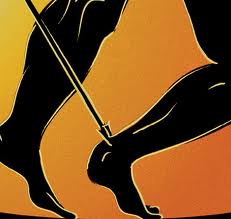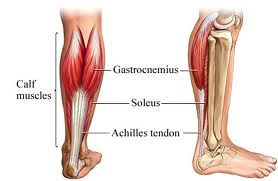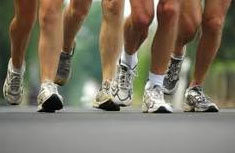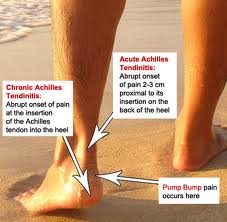Achilles Tendinopathy
- Home
- Ankle
- Common Ailments
- Achilles Tendinopathy
Achilles Tendinopathy is the true term for Achilles Tendonitis. It is a degenerative condition, rather than an inflammatory one, affecting the Achilles Tendon and is commonly recognised as an overuse injury.

The Achilles Tendon is the largest, thickest and strongest tendon in the body. The tendon originates from 2 muscles called the gastrocnemius and soleus. The tendon is surrounded by a very thin sheath known as the paratendon. The primary function of the Achilles Tendon is to transmit the power from the calf to the foot resulting in the ability to push off forward, allow skipping and jumping and control the action of landing.

- Increase in activity i.e. running distance, speed or hills or general increase in aerobic exercise
- Reduced recovery time between activities
- Weak calf muscles
- Decreased range of motion at the ankle joint, usually caused by tight calf muscles
- History of wearing high heels constantly can potentially shorten the tendon and calf muscle

Acute
- Gradual onset of pain over a period of days
- Pain at the onset of exercise which fades as the exercise progresses
- Pain eases with rest
- Tenderness on palpation
Chronic Achilles Tendinopathy may follow on from the acute stage if it goes on untreated or is not allowed sufficient rest. Chronic Achilles Tendinopathy is a challenging condition to treat.
Chronic
- Gradual onset of pain over a period of weeks, or even months
- Pain with all exercise, which is constant throughout
- Pain in the tendon when walking, especially uphill or stairs
- Pain and stiffness in the Achilles Tendon especially in the morning or after rest
- There maybe nodules or lumps in the Achilles tendon, or you may notice a thickening over the tendon
- Tenderness on palpation

.
- Ice therapycan be an effective form of pain relief. As the condition is rarely an inflammatory one the use of anti-inflammatory medication (NSAIDs) is not appropriate. In fact, it can be counter productive.
- Heel raise. Placing a small wedge underneath the heel or wearing shoes with a slight heel can help to reduce the load on the tendon and assist with healing
- Stop aggravating factors is one of the most important management aspects of treating achilles tendinopathy. If a person continues to load their achilles tendon through running, sport or exercise then recovery time can take much longer. It is advisable to STOP all activities that cause symptoms then re-introduce them as directed by a physiotherapist.
- Eccentric training programme. Published research suggests that recovery is optimised by using a very gradually progressed eccentric programme. Eccentric muscle work refers to a muscle that is lengthening while contracting. Maximum tension is generated in the muscle and tendon during the eccentric contraction. Gradually increasing the load by increasing the number of sets and reps of eccentric Calf contractions causes the Achilles Tendon to adapt and get stronger
- Stretches to the achilles tendon will help ease symptoms and ensure length of the muscle is maintained
- Correct, supportive footwear is essential in the management of achilles tendinopathy. Chose shoes that have a support around the ankle and arch. Avoid flat ballet pump type shoes, slippers and sandals in the initial stages of treatment.
Other treatment options include taping, injection and at a last resort, for the chronic un-resolving achilles tendinopathy, surgery.
Physiotherapy management is essential for successful treatment of achilles tendinopathy. Our aim is to teach the patient the correct management tools. A guided eccentric training programme is key to a successful outcome. Once your symptoms are under control you can then start to introduce your chosen sport or activity.
